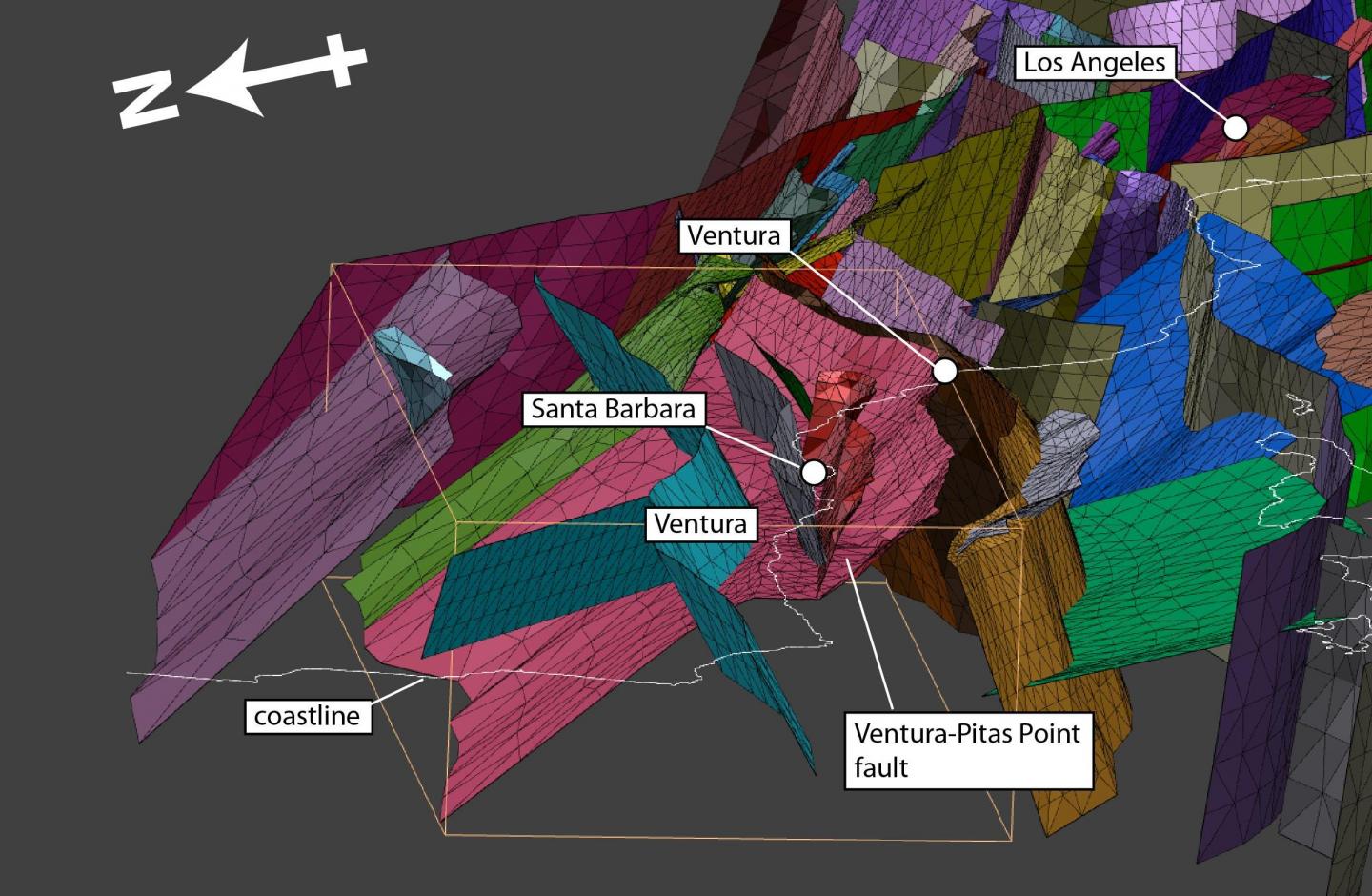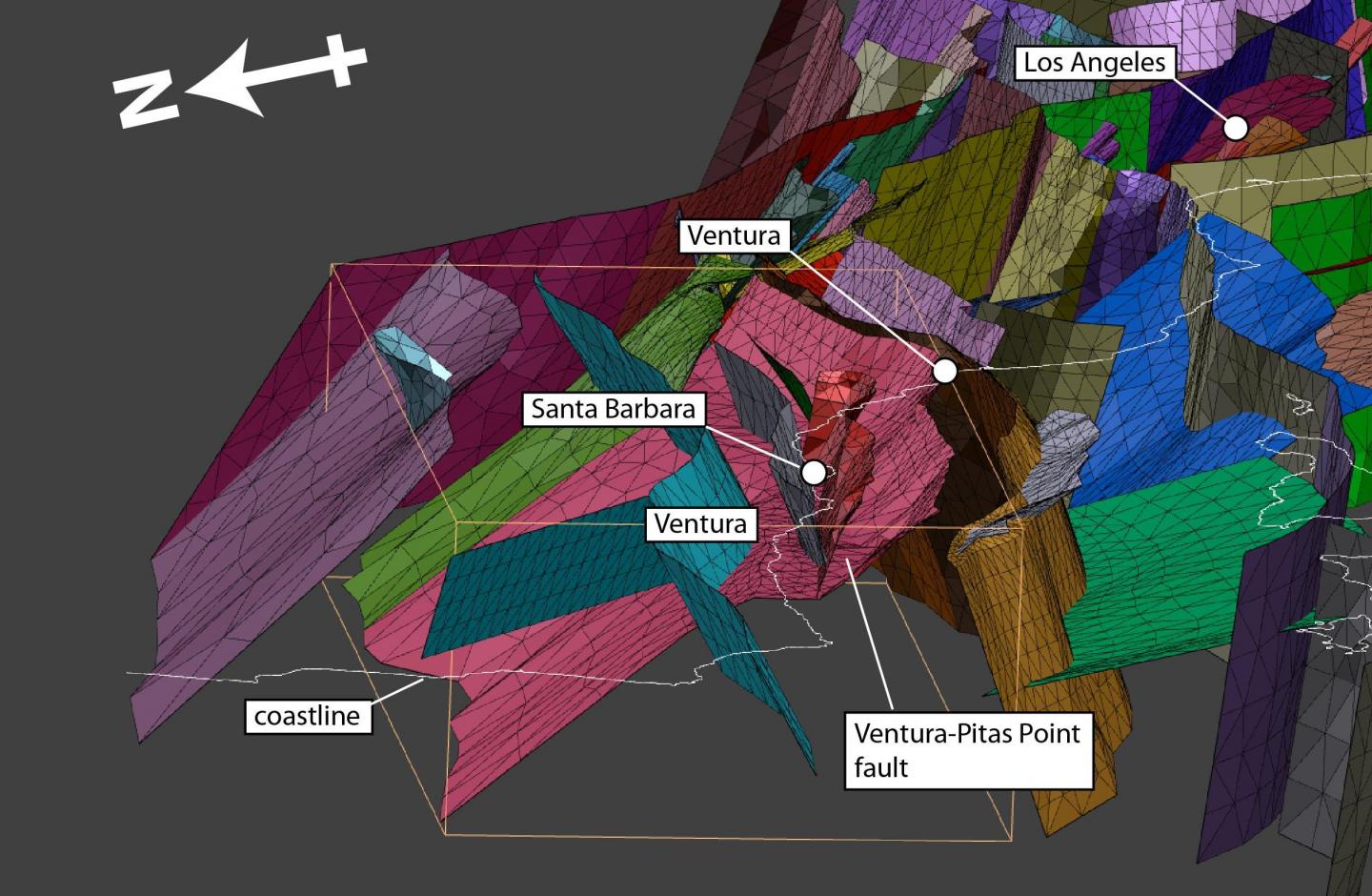
Credit: Gareth J. Funning and Scott T. Marshall.
RIVERSIDE, Calif. — A new study by a team of researchers, including one from the University of California, Riverside, found that the fault under Ventura, Calif., would likely cause stronger shaking during an earthquake and more damage than previously suspected.
The Ventura-Pitas Point fault in southern California has been the focus of a lot of recent attention because it is thought to be capable of magnitude 8 earthquakes. It underlies the city of Ventura and runs offshore, and thus may be capable of generating tsunamis.
Since it was identified as an active and potentially dangerous fault in the late 1980s, there has been a controversy about its location and geometry underground, with two competing models.
Originally, researchers assumed the fault was planar and steeply dipping, like a sheet of plywood positioned against a house, to a depth of about 13 miles. But a more recent study, published in 2014, suggested the fault had a "ramp-flat geometry," with a flat section between two tilting sections, similar to a portion of a staircase.
In a recently published paper in Geophysical Research Letters, a team of researchers used computer modeling to test the two alternatives.
In these computer models, the crust — outermost layer of rock — in the Ventura-Santa Barbara region is represented as a three-dimensional volume, with the surfaces of the region's faults as weaknesses within it. That volume is then "squeezed" at the rate and direction that the region is being squeezed by plate tectonics. In comparisons of the expected movement in the models with GPS data, the fault with the staircase-like structure was favored.
That means more of the fault, which runs westward 60 miles from the city of Ventura, through the Santa Barbara Channel, and beneath the cities of Santa Barbara and Goleta, is closer to the surface. That would likely cause stronger shaking during an earthquake and more damage.
"Our models confirm that the Ventura-Pitas Point fault is a major fault, that lies flat under much of the coast between Ventura and Santa Barbara," said Gareth Funning, an associate professor of geophysics at UC Riverside, one of the authors of the study. "This means that a potential source of large earthquakes is just a few miles beneath the ground in those cities. We would expect very strong shaking if one occurred."
Future research will address the consequences of there being a fault ramp under Ventura. Researchers now can run more accurate simulations based on the ramp model to predict where the shaking will be strongest, and whether they would expect a tsunami.
###
The paper is called "Mechanical models favor a ramp geometry for the Ventura-Pitas Point fault, California." In addition to Funning, the authors are: Scott Marshall and Hannah E. Krueger, both of Appalachian State University; Susan Owen, at the NASA Jet Propulsion Laboratory; and John Loveless at Smith College.
The University of California, Riverside is a doctoral research university, a living laboratory for groundbreaking exploration of issues critical to Inland Southern California, the state and communities around the world. Reflecting California's diverse culture, UCR's enrollment is now nearly 23,000 students. The campus opened a medical school in 2013 and has reached the heart of the Coachella Valley by way of the UCR Palm Desert Center. The campus has an annual statewide economic impact of more than $1 billion. A broadcast studio with fiber cable to the AT&T Hollywood hub is available for live or taped interviews. UCR also has ISDN for radio interviews. To learn more, call (951) UCR-NEWS.
Media Contact
Sean Nealon
[email protected]
951-827-6397
@UCRiverside
http://www.ucr.edu
############
Story Source: Materials provided by Scienmag





